Bok choy kimchi is crisp, flavorful, and easy to make! Lightly seasoned with fresh chilies and classic kimchi flavors, it’s perfect as a fresh side dish or slightly fermented for a tangy kick.
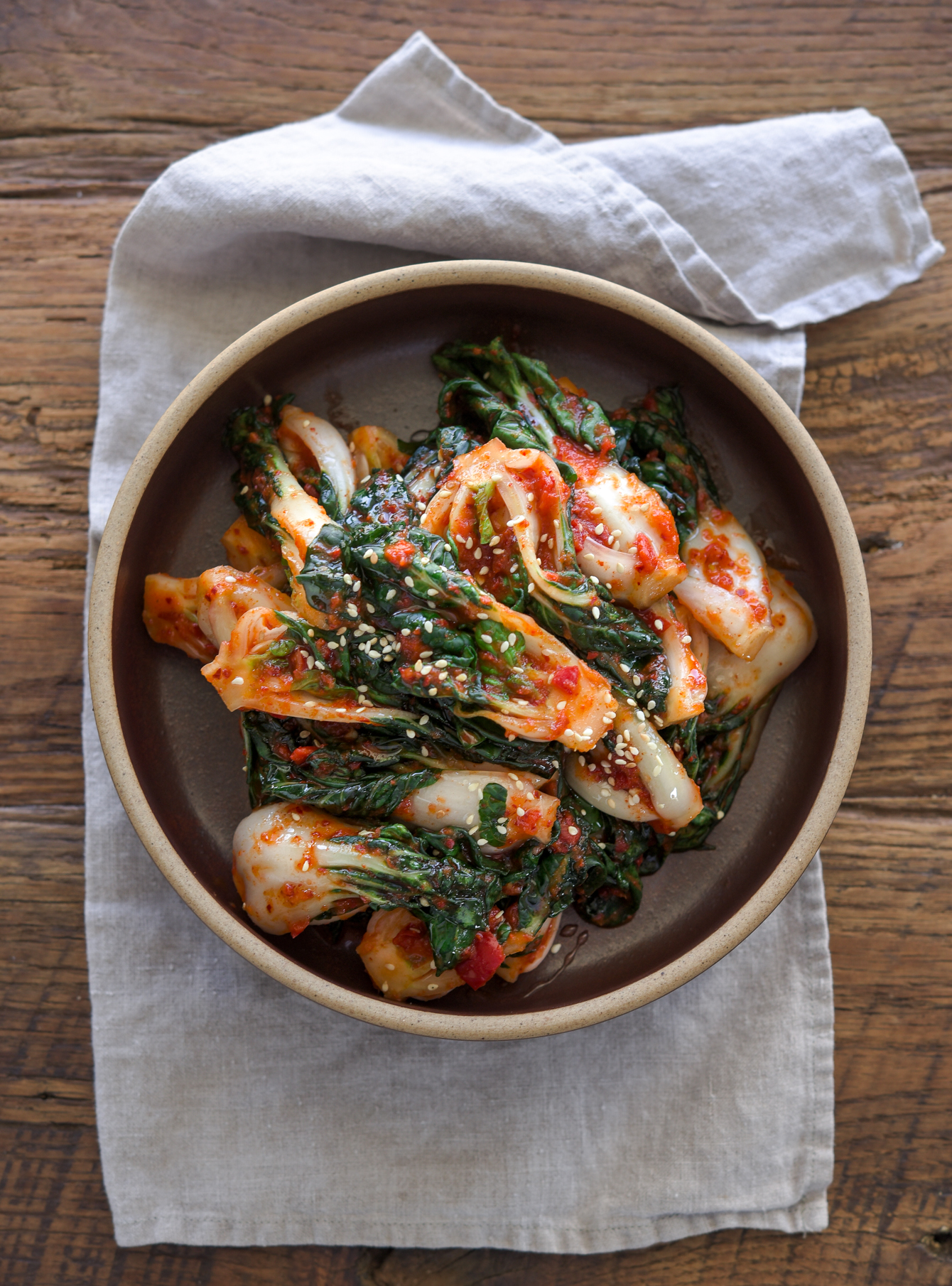

I first came up with this bok choy kimchi recipe when I lived in Hong Kong, where I often shopped at the street markets.
The baby bok choy was always so fresh, beautiful, and inexpensive that I started making kimchi with it instead of napa cabbage—and it turned out to be a big success.
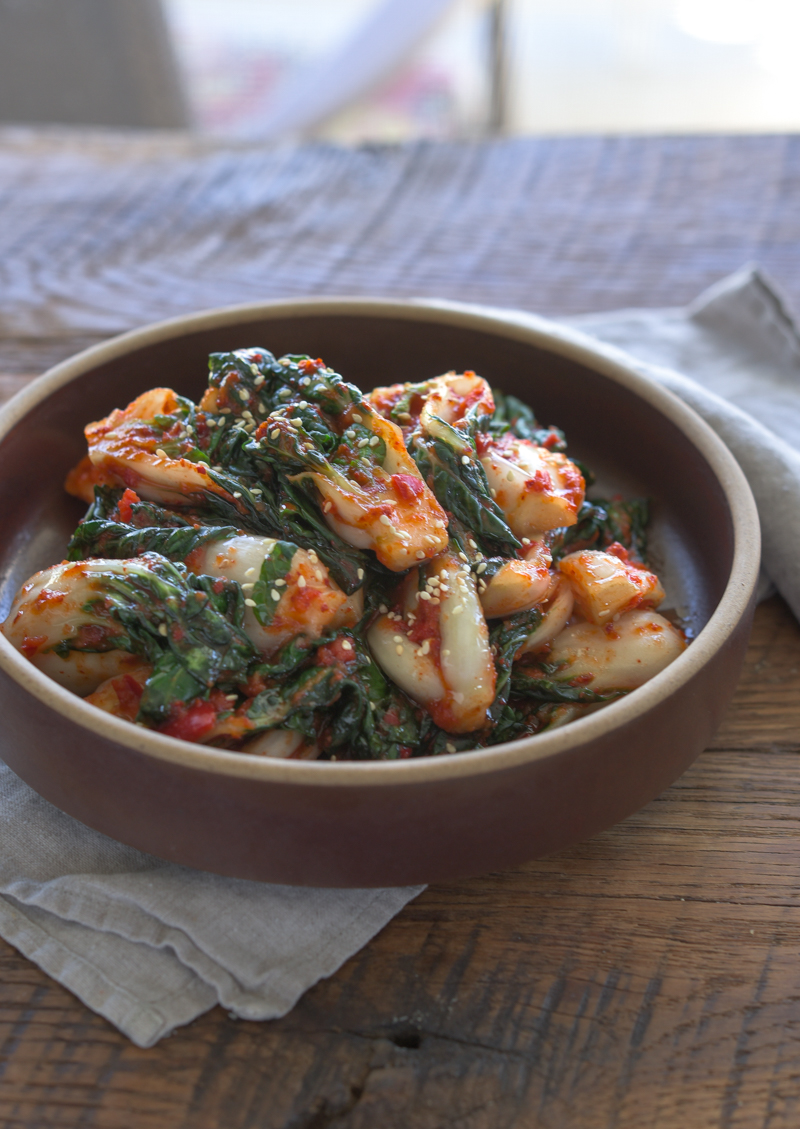

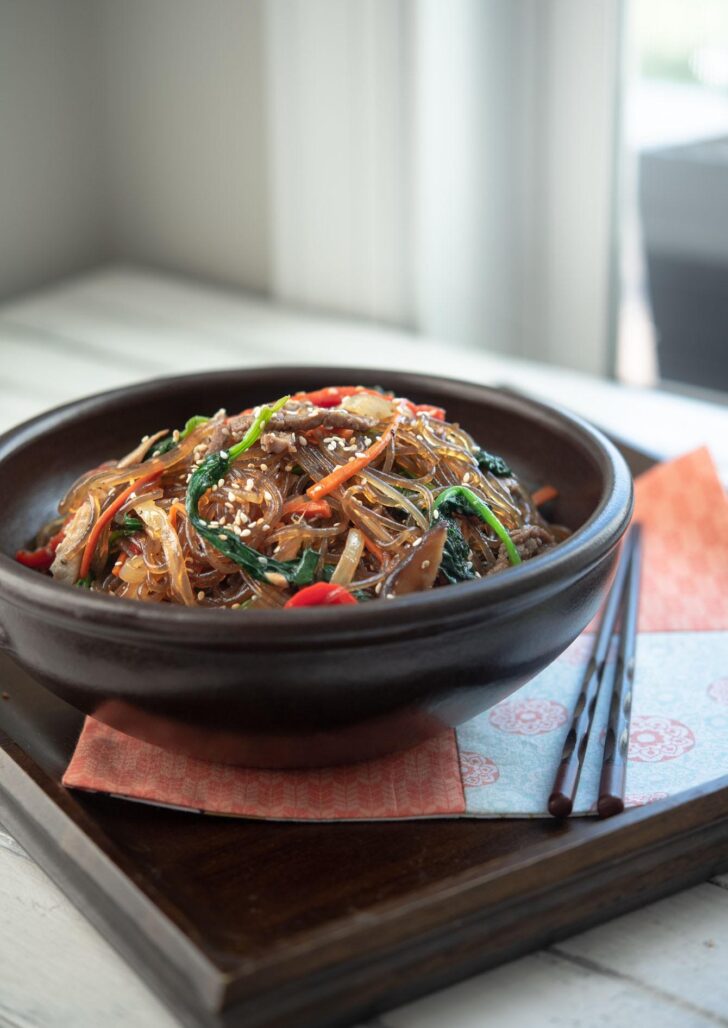

Get new recipes via email:
The process is similar to quick napa kimchi, but I add chopped fresh red chili to brighten the flavor and complement the delicate crunch of bok choy. It’s a refreshing twist on Korean kimchi that doesn’t require long fermentation—great as a fresh side dish or enjoyed slightly tangy after a day or two.
I used to share it with friends and neighbors, and it always got rave reviews. Everyone wanted the recipe! If you’ve never tried making kimchi with bok choy before, this easy method is a great place to start.
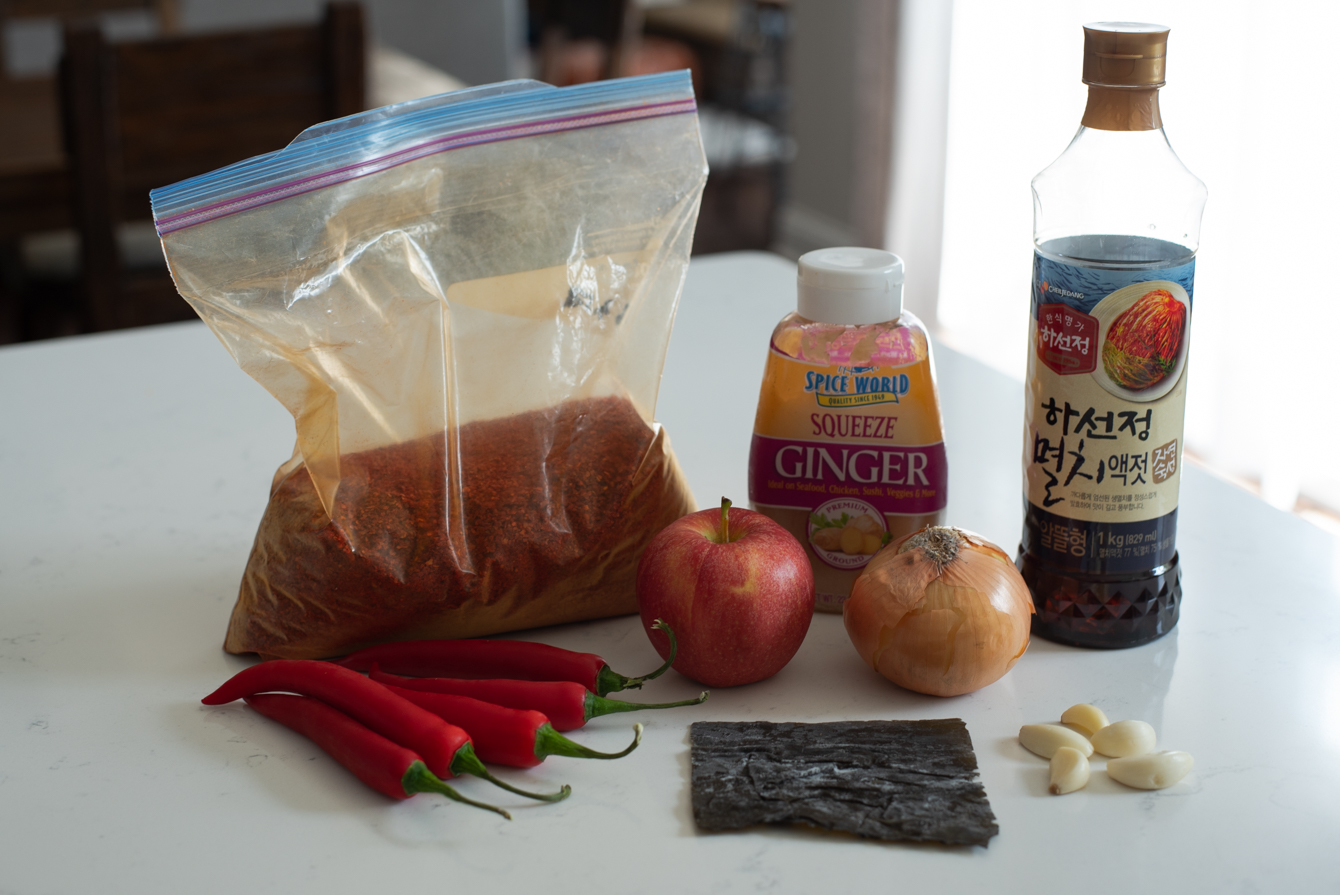

My Go-To Ingredients for Fresh Bok Choy Kimchi
- Bok Choy: I prefer using baby bok choy for its tender, crisp texture, but Shanghai bok choy works just as well. It stays beautifully crunchy even after a quick brine, which makes it ideal for fresh kimchi like this. Be sure to rinse thoroughly—dirt loves to hide between the stems.
- Korean Sea Salt: A brief soak with coarse Korean salt draws moisture from the stems and gives the bok choy just enough bend to hold the kimchi paste without becoming limp.
- Kimchi Paste Ingredients: I use sweet apple instead of sugar to round out the heat—it keeps the flavor clean and naturally balanced. Gochugaru adds warmth and color, while fish sauce, garlic, and ginger bring that deep, classic kimchi flavor. This mix keeps it bold but still light, perfect for bok choy.
- Fresh Red Chilies: This is where I add a personal touch. When I first developed this recipe in Hong Kong, I started using chopped red chilies to brighten the bok choy flavor. Fingerlong chilies are perfect—mild and refreshing. If you can’t find them, just use extra gochugaru.
- Optional Kelp Stock: I often simmer a small piece of dried kelp for a few minutes to use as the liquid in the kimchi paste. It’s subtle, but adds a layer of umami that I really love.
How I Make Bok Choy Kimchi (Step-by-Step Visual Guide)
These step-by-step photos are here to guide you visually through the recipe. For exact measurements and full instructions, scroll down to the printable recipe card below.
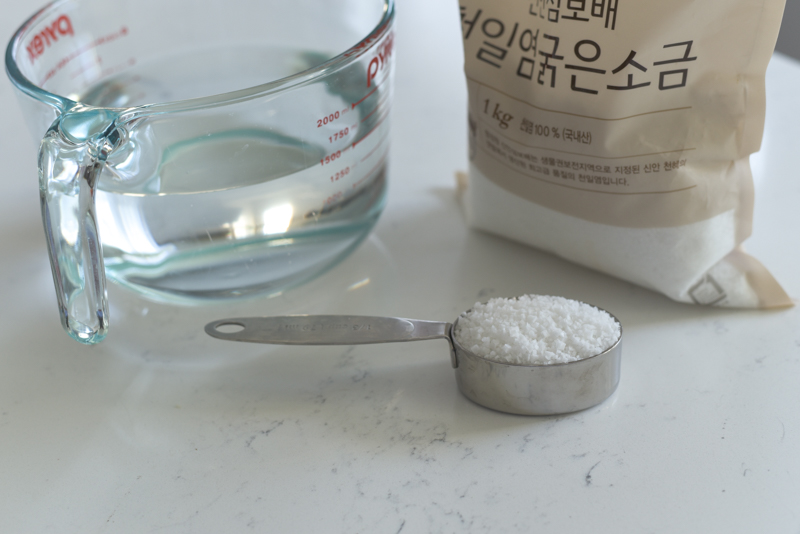

First, you will need to mix salt with water.
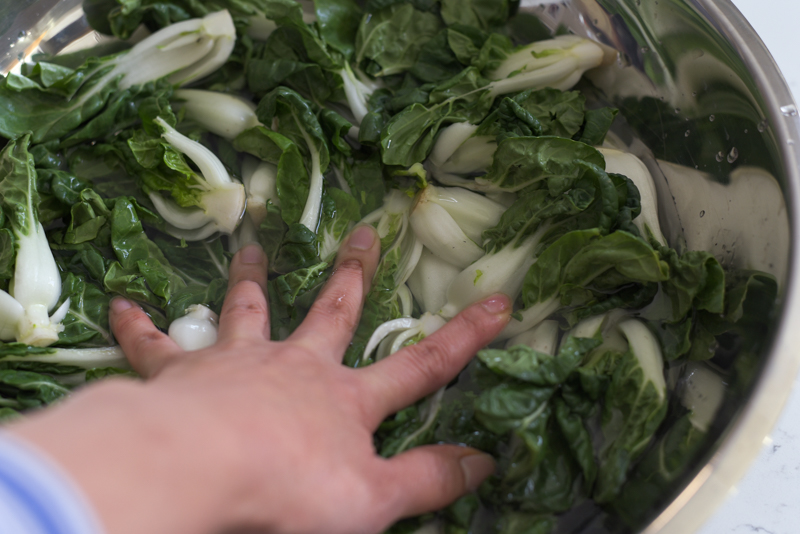

Soak the bok choy in salt water just long enough to soften the stems—30 minutes does the trick.
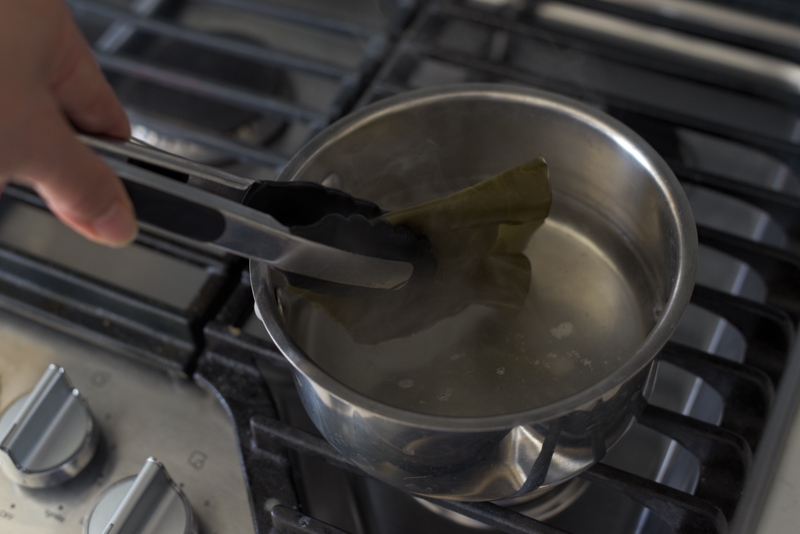

Optional Kelp Stock: Simmer a small piece of dried kelp in water for a few minutes and let it cool before using.
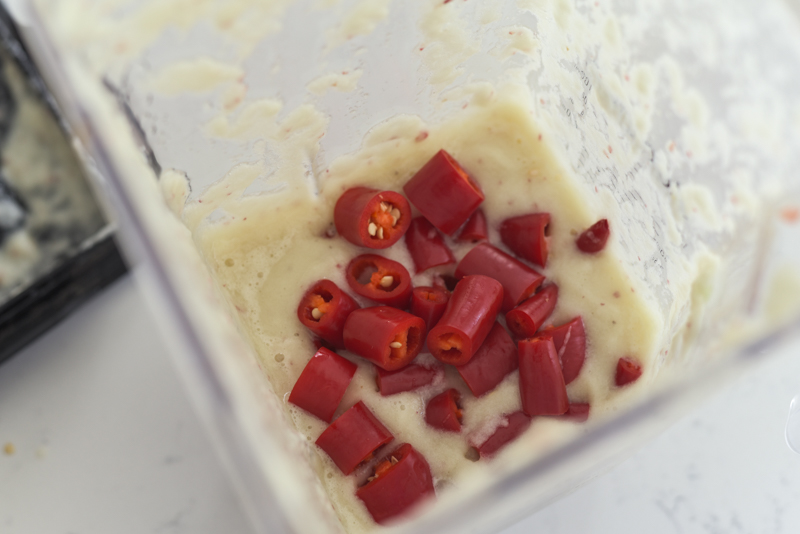



Make the kimchi paste using a blend of onion, apple, garlic, and mild fresh chilies.


Toss and coat the bok choy gently so the leaves stay intact. You don’t need much paste—just enough to season every piece. Enjoy this kimchi as a salad or a side dish. It pairs particularly well with bulgogi or LA galbi.
Want to make bok choy kimchi without fish sauce? Try Korean soup soy sauce for a delicious vegetarian alternative with rich flavor—just like in my vegan kimchi recipe!
Fermentation Tips
I usually enjoy bok choy kimchi fresh—it’s crisp, light, and perfect as a quick side. But if you prefer a bit of tang, just leave it out at room temperature for a day to kickstart fermentation, then move it to the fridge.
Unlike napa cabbage kimchi, this version ferments fast and isn’t meant for long storage. In my experience, it tastes best within 2 weeks—after that, the bok choy starts to lose its texture.
More Easy Kimchi Recipes to Try
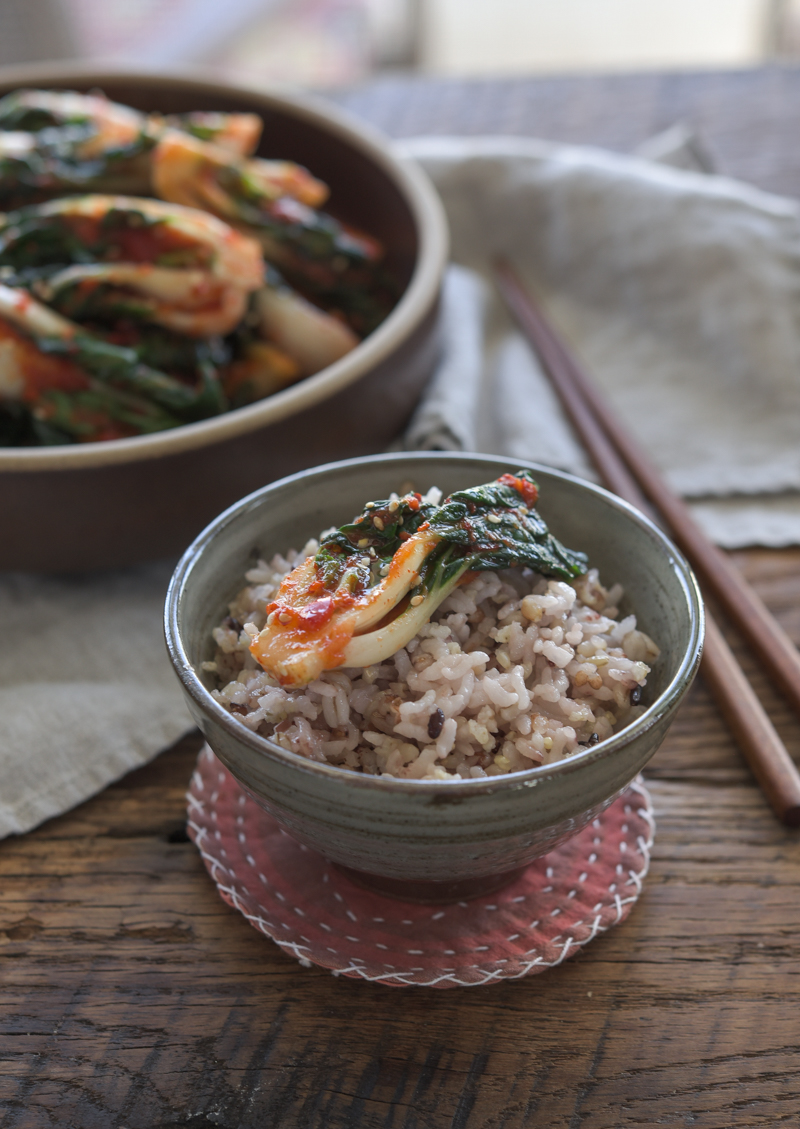

Love this recipe? Rate it and share your experience in the comments below! On Instagram? Tag me to showcase your creation. For more delicious recipes, subscribe to our newsletter!


Easy Bok Choy Kimchi
Crisp and refreshing Korean bok choy kimchi made with baby bok choy and fresh chilies. A quick, easy side dish that’s ready in under an hour.
- 1 1/2 lb (680 g) bok choy, halved or quartered lengthwise
- 6 cup (1.4 liters) water
- 1/3 cup (55 g) Korean coarse sea salt
-
Place clean bok choy in a large mixing bowl. Dissolve the sea salt in water and pour over to bok choy. Let it sit for 30 minutes, then drain.
-
To make the kimchi seasoning, puree onion, apple, and garlic with 1/4 cup of sea kelp stock in a blender until smooth. Add the sliced red chilies and pulse the mixture until the chilies are processed into small pieces.
-
Put the pureed mixture into a medium mixing bowl. Add the Korean chili flakes, anchovy sauce, and ginger puree. Mix well.
-
Toss the bok choy with the kimchi seasoning paste. Be gentle when you are coating the bok choy with the paste so that you don’t bruise them.
-
Bok choy kimchi tastes best within 2-3 days, as it is not meant for long-term storage like most Korean kimchi. If there’s any leftover, store it in an airtight container in the refrigerator. If you prefer it fermented, leave it at room temperature for one day before refrigerating. I recommend consuming this kimchi within 2 weeks if fermented.
Want a fish sauce-free option? Try Korean soup soy sauce for a delicious vegetarian alternative with rich flavor!
Calories: 40kcal, Carbohydrates: 7g, Protein: 2g, Fat: 1g, Saturated Fat: 1g, Sodium: 754mg, Potassium: 143mg, Fiber: 3g, Sugar: 3g, Vitamin A: 4661IU, Vitamin C: 36mg, Calcium: 107mg, Iron: 1mg
